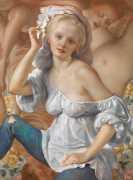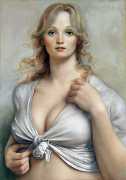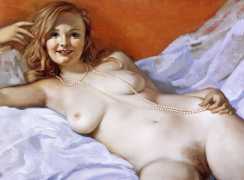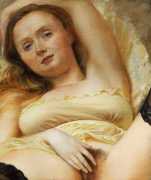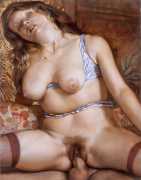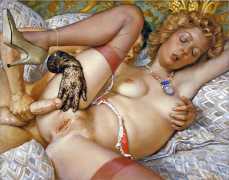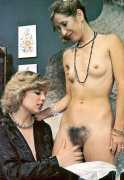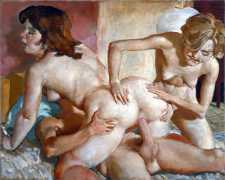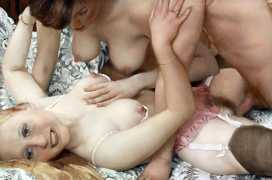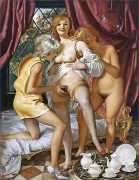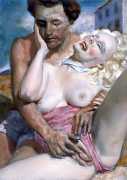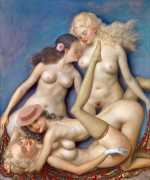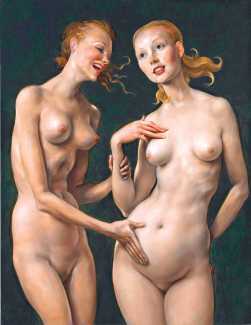
In November 2016, John Currin’s double nude Nice’n’Easy sold at Christie’s auction house in New York for over $12 million. The accompanying auction catalogue compared his paintings with those of Goya, Manet, and Otto Dix. The title may well be a nod to the supposed freewheeling sexuality of easy women, or it may be to the artificial hair colouring sold by Clairol – the verbal wit is typically Currin, often described as spontaneous and self-deprecating. When asked if he takes issue with bad reviews in the press, his standard reply is that his critics are usually right, but who can complain when the paintings command such high prices?
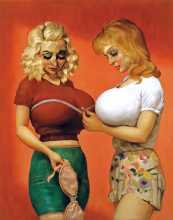
John Currin was born in Boulder, Colorado, and grew up in Connecticut, the son of a physics professor and a piano teacher. As a teenager he studied painting privately with Lev Meshberg, a traditionally trained Russian artist. Currin then went to Carnegie Mellon University in Pittsburgh, where he obtained a Bachelor in Fine Arts in 1984, then a Masters from Yale two years later. His professional debut came in 1989, showing paintings of fictionalised yearbook photographs at the non-profit space White Columns in New York, followed by a controversial and deliberately crudely-painted series of busty young women.
By the late 1990s Currin’s skill in painting kitsch subjects with technical facility met with critical and financial success, and by 2003 his paintings were selling for high prices. It was around the turn of the millennium that he started painting explicitly pornographic images, explaining that ‘I wanted to see if I could make this clearly debased and unbeautiful thing become beautiful in a painting’.
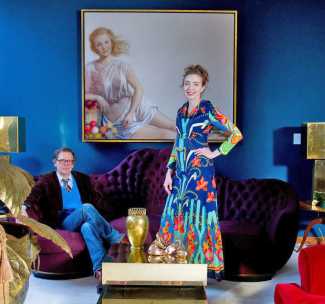
In 1994 Currin met artist Rachel Feinstein at a gallery where she was living in a self-made gingerbread house as a performance piece. They were engaged two weeks later at a Currin exhibition in Paris, and married in 1997 – they have two sons and a daughter. Feinstein has sometimes been described as Currin’s muse, which he typically describes as ‘kinda corny’; however, he has written that ‘When I met Rachel I felt that I could connect with some principles that moved my art along, that I had some freedom from the petty things in my own personality’. She appears in many of Currin’s paintings, both as a recognisable face and as a body model.



